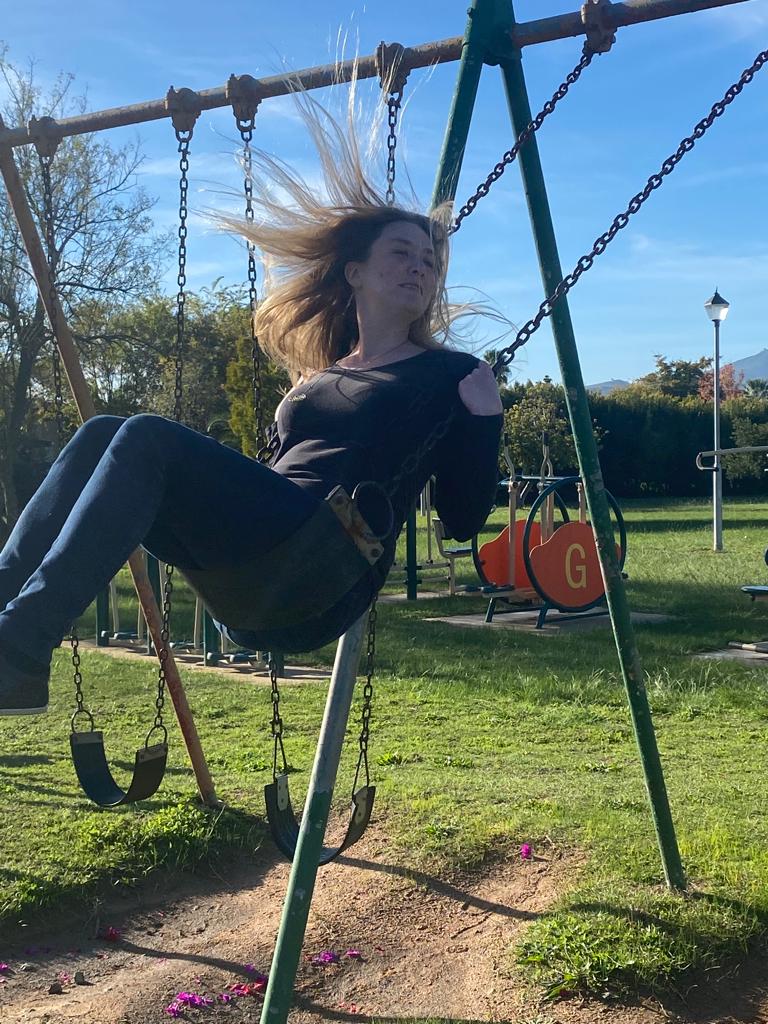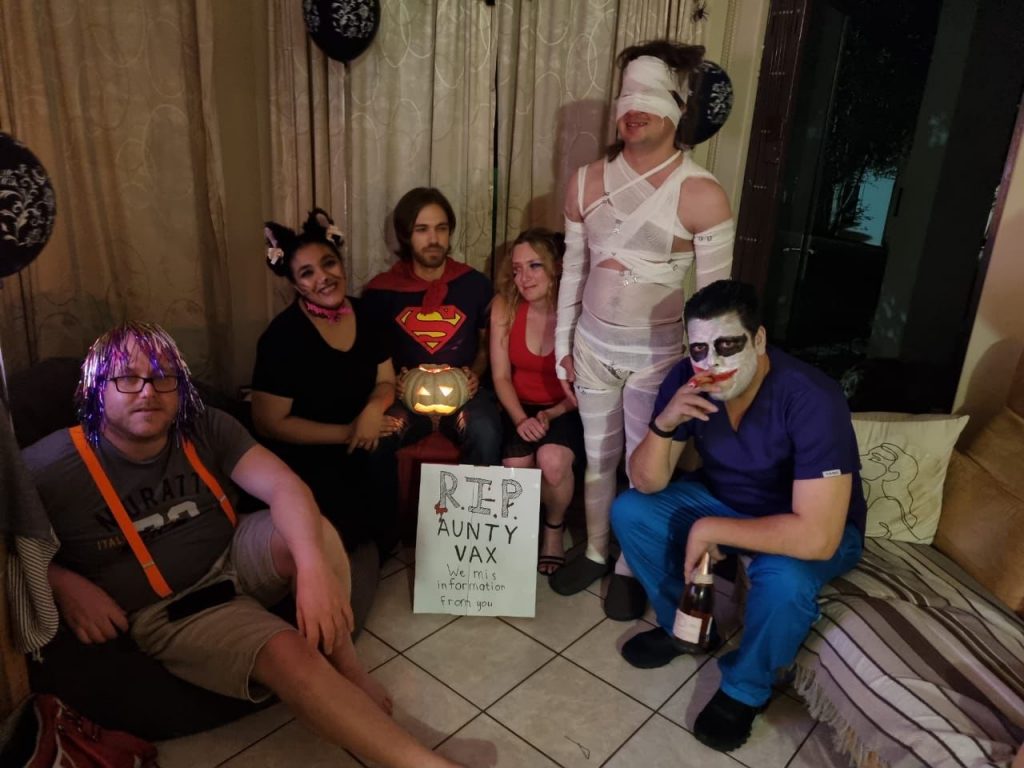
In the swimming pool, I notice that good ideas are born. My friends and I often become very philosophical while we swim, and we have now come to call the pool our “think tank”. The other day, we were discussing the topic of disability and body language, which I haven’t read much about, or actually read about at all over the years. Yet, there is so much to say about it!
When I was younger, I really didn’t understand body language at all. That’s no wonder, because I can’t actually see when people are communicating with their bodies. I just thought it was completely irrelevant to me. Later I learned that it has always had an effect on my life. For example, I remember being told by my mother from a very young age that I should look at people when I talk to them. This is something I had to practice. You see, I didn’t instinctually understand that I should do that. I would often talk to people whilst looking away, or even with my back turned to them. I was of the opinion that it didn’t matter where I was looking, because people could just hear my voice. Yet, for sighted people it really has a massive impact on not only their perception of whether I am showing them respect or not, but also on if they really listen to what I’m saying in the first place.
When I used to take part in singing competitions as a teenager, I learned that judges take more things into consideration than whether or not one has a nice voice. My vocal coach used to tell me to try not to play with my fingers on stage (it’s something I do when I’m nervous, and actually just a habit of mine in general) because it distracts people from my singing and they end up watching my hands instead of listening.
Also, as a little girl I used to find it hilarious how my mother moved her hands and arms around, gesturing furiously when talking animatedly. I didn’t understand why gestures were such an important part of conversation, and only later did I learn that gestures can be even more important in certain cultures. I think it truly hit home for me when I got my guide dog, because I was taught to use certain gestures to tell her to stay, walk, or go left and right. She responds to the gestures much better than to the verbal commands.
Then, during my Psychology studies, I learned that so many things can be communicated through one’s physical stance! It doesn’t only say something about your mood (hunched shoulders indicating stress or anxiety) but often one’s posture can indicate whether or not a person appears inviting and approachable. Shoulders slightly back, with arms more open communicates that one is relaxed, friendly and engaged, whereas crossed arms makes one seem closed off, less approachable, and possibly even angry or annoyed. Of course, the way we move also has an impact when we are flirting, with a slight swing in the hips when walking (as women mostly), batting of the eyelashes, and touching a person’s arm when talking to them, for example, indicating that we are interested.
I used to think that I just don’t use body language in my communication. However, I’ve been told that sometimes my feelings are very clearly communicated through my facial expressions and my stance, though it may be completely unconscious. I have also been told that it’s sometimes difficult to read my facial expressions, which led me to believe that I’d be great at poker. This may be untrue though. With what I know now, I will be much more aware of unconscious ticks and tells next time I play.
I have also come to realise that body language is really about much more than what one can see. Even I can pick up on someone’s mood and attitude from the way that their voice projects through standing and sitting in certain ways, and of course, through tone of voice. I think tone of voice counts as body language, because vocal chords are part of the body after all, and tone of voice communicates many more things than the words that are coming out of a person’s mouth. In addition, body language can be tactile, such as when someone is leading me and they move their arm behind them to indicate to me that we are going to be moving through a small space and should walk in single file.
As a blind woman, one of the things I have found most difficult about communication is eye contact. People communicate so many things with their eyes, and that is something I will never truly master. At university, I always wondered how sighted people were able to attract each other’s attention so easily. Especially when in loud bars, clubs or restaurants, I found it extremely difficult to get a friend’s attention when talking to them, or when trying to engage in conversation. I generally steer clear of such loud places overall, because it’s difficult for me to hear what people are saying. Of course, sighted people find this easier, because of eye contact and because they can read lips.
Nodding and head shaking also perplexed me at some point in my life. Sometimes somebody would ask someone else a question, they would nod or shake their heads, and I would be under the impression that they didn’t respond to the question because they didn’t hear or were being rude, which wasn’t the case.
Of course, body language is incredibly important to D/deaf people. Often, they understand what others are saying through lip reading, and sign language is definitely a form of body language. For people with cognitive impairments who are not very verbal, their state of mind is often communicated physically. This also counts for people on the autism spectrum.
Something that I also learned later in life is that there are certain types of body language that make wheelchair users more comfortable too. This might not be the case for all of them, but I have been told that looking up at someone all the time when talking to them can be very uncomfortable. It can be physically uncomfortable to always be looking up and perhaps straining one’s neck, and it can be uncomfortable in the other sense of the word to look up at people, because it sometimes unconsciously says something about the power dynamics in the interaction. A friend also told me that she struggles to make conversation when she is in a group of people who are all standing, because they are just on different levels, making eye contact difficult. Some wheelchair users very much appreciate it, if during conversation, people can be on the same level as them. Crouching is a complicated thing, because wheelchair users also don’t want to feel that the person they’re talking too is acting unnaturally. Sometimes, crouching can also be perceived as what one might do when speaking to a child. I’m not saying that all crouching is bad though. I have just been told that, when possible, it’s a good idea to find somewhere to sit when engaging in a conversation with a wheelchair user.
There is so much more that I need to understand about body language, and body language in relation to disability specifically, so this is by no means a comprehensive coverage of the topic. Still, it’s something interesting to think about, and over the years I have learned that just because I’m blind doesn’t mean that I can simply give the middle finger to nonverbal communication.


